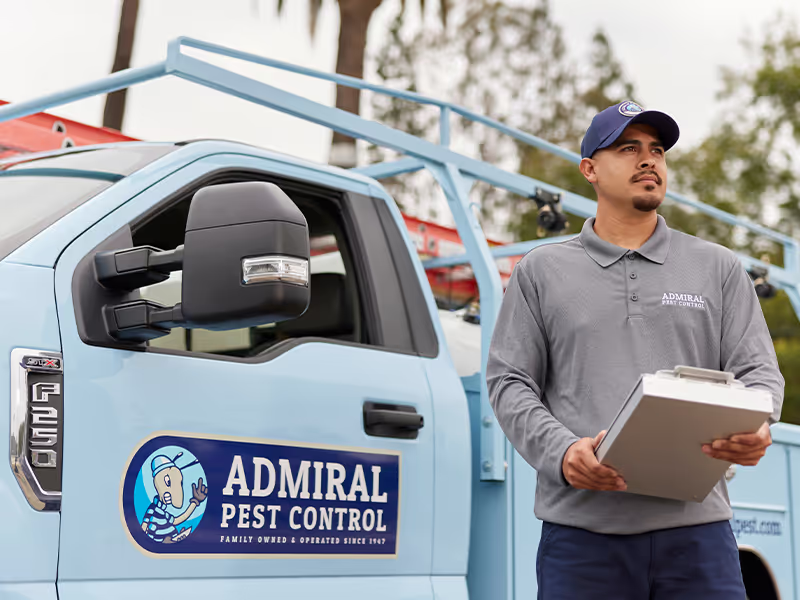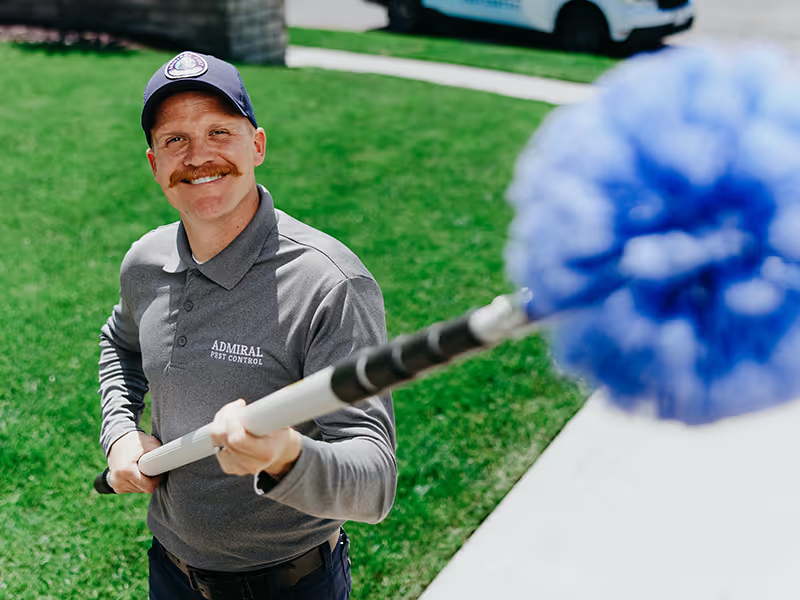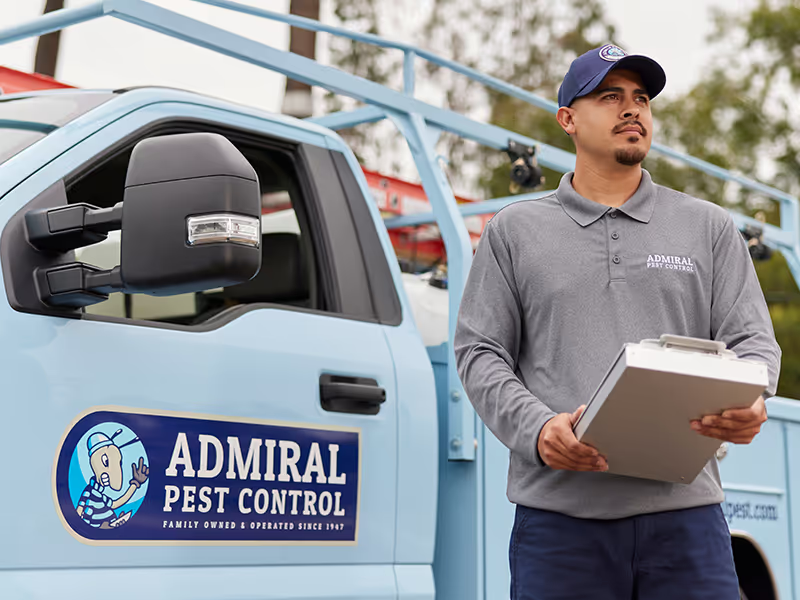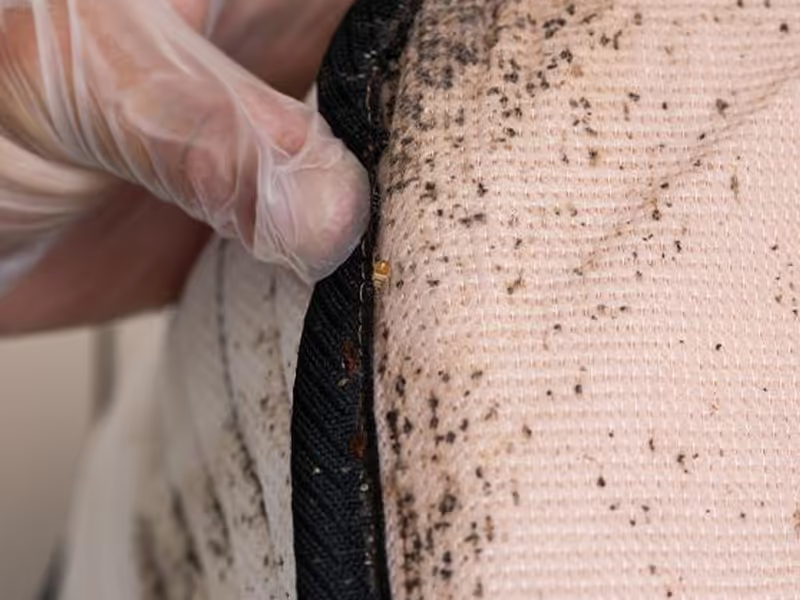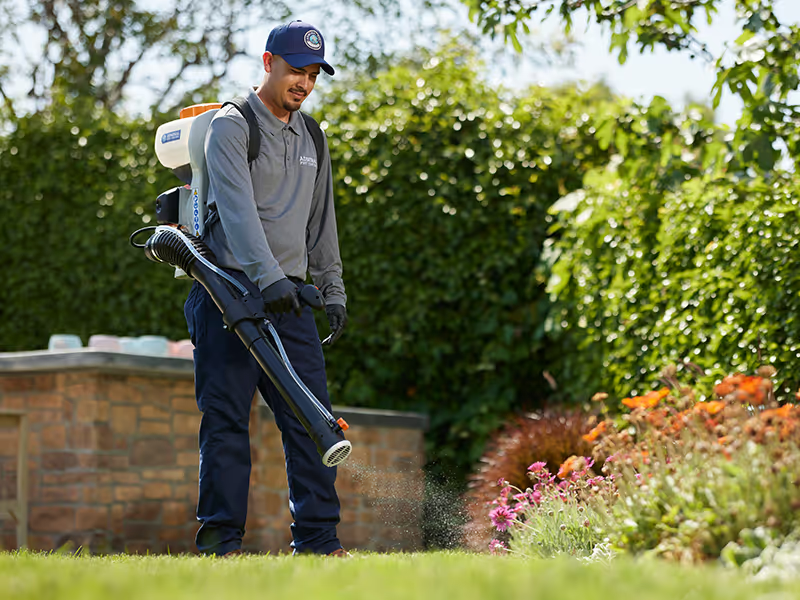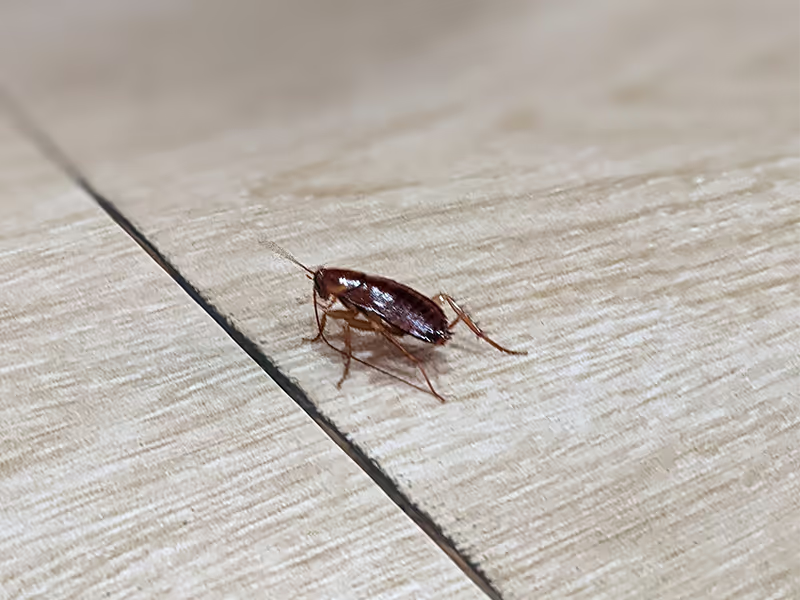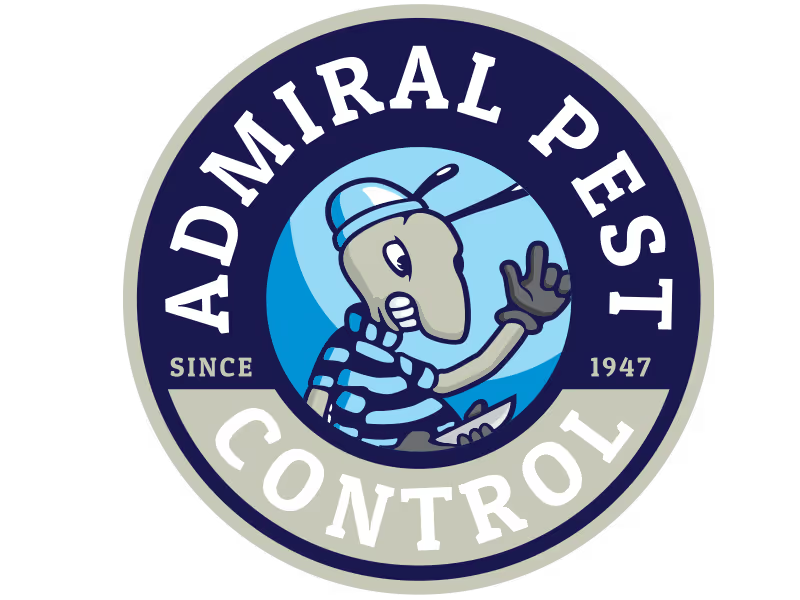Why Cockroaches Are a Constant Problem in California
California’s warm climate is a dream for many creatures, including cockroaches. These pests thrive in mild weather conditions and are especially active during spring and summer. Urban areas, in particular, provide ideal habitats, as they offer a constant supply of food, water, and shelter. Combine these factors, and it’s no wonder cockroaches are such a common issue for homeowners across the Golden State.
Now, let’s take a closer look at the three most prevalent cockroach species in California.
Meet the Cockroach Culprits
Common Types of Cockroaches in California and How to Address Them
California hosts a range of cockroach species, each posing unique challenges for both homeowners and businesses. Below, we’ll explore seven common cockroach species, detailing their appearance, habitat and behavior, why they’re problematic, and how to prevent them.
1. German Cockroach
Appearance
The German cockroach is small, around 1/2 inch long, with light brown coloring and two distinctive dark stripes running across its pronotum.
Habitat and Behavior
This species is predominantly found indoors, especially in kitchens and bathrooms. They thrive in warm, humid environments with access to food and water. German cockroaches are nocturnal, hiding in cracks and crevices during the day.
Why They Are Problematic
German cockroaches reproduce rapidly; a single female and her offspring can spawn over 30,000 individuals in a year. They contaminate food and surfaces, spread bacteria like Salmonella and E. coli, and produce allergens that can trigger asthma, especially in children.
Prevention Tips
- Keep kitchens and bathrooms clean and free of food debris.
- Store food in airtight containers.
- Fix leaks and reduce moisture levels.
- Seal cracks, crevices, and gaps where roaches may hide.
- Use sticky traps and baits in areas prone to infestations.
2. Brown Banded Cockroach
Appearance
Brown banded cockroaches are about 1/2 inch long. Males are a tan shade, while females are darker brown. Both feature light-colored bands across their wings and abdomen.
Habitat and Behavior
These cockroaches prefer warm indoor areas, around 80°F or higher. They are often found near electrical appliances like televisions, refrigerators, and computers. Unlike the German cockroach, they are not restricted to food preparation areas and may inhabit ceilings, furniture, or storage spaces.
Why They Are Problematic
Brownbanded cockroaches are less common than German cockroaches but are still destructive. They contaminate food, emit a foul odor, and can cause allergic reactions. Their preference for hidden spaces makes infestations harder to detect and resolve.
Prevention Tips
- Inspect and clean behind appliances and in cabinets frequently.
- Remove clutter and avoid storing paper products in warm areas.
- Glue traps can help identify infestations.
- Seal entry points and cracks in walls or ceilings.
3. Oriental Cockroach
Appearance
The Oriental cockroach is larger than the German or Brownbanded species, measuring about 1 1/4 inches. They are dark brown to black with a shiny appearance. Males have short wings, while females have rudimentary wings.
Habitat and Behavior
Often referred to as “water bugs,” these cockroaches prefer cool, damp areas like basements, drains, water meter boxes, and woodpiles. They are nocturnal and tend to move slowly. Oriental cockroaches cannot climb smooth vertical surfaces and are frequently found trapped in sinks or tubs.
Why They Are Problematic
Oriental cockroaches are known for their unsanitary habits, often feeding on garbage, decaying organic material, and waste. They are notorious for spreading harmful bacteria and causing food poisoning. Their presence is also associated with a distinct, unpleasant odor.
Prevention Tips
- Eliminate damp areas by improving ventilation and repairing leaks.
- Keep drains clean and covered.
- Store firewood and debris away from your home.
- Use insect baits and traps around damp areas.
4. Smokybrown Cockroach
Appearance
This species is about 1 1/2 inches long, with a dark brown to mahogany color and a shiny exterior.
Habitat and Behavior
Smokybrown cockroaches are typically outdoor dwellers, living in garages, woodpiles, planter boxes, and attics. They may also hide under roof shingles or vegetation. These roaches are strong fliers and are often active on warm, humid evenings.
Why They Are Problematic
Smokybrown cockroaches frequently invade homes from outdoor environments. They feed on both decaying and fresh food sources, potentially contaminating them. They can also damage plants and create allergens harmful to humans.
Prevention Tips
- Trim shrubs, trees, and vegetation near your home.
- Install weather stripping around doors and windows.
- Remove woodpiles and yard debris.
- Seal attic entries and other potential points of entry.
5. American Cockroach
Appearance
The American cockroach is the largest of the common species, measuring up to 2 inches. They are reddish-brown with a lighter band along the edges of their pronotum.
Habitat and Behavior
These cockroaches prefer warm, humid environments like sewers, basements, and storm drains. They are primarily outdoor insects but may enter buildings in search of food or shelter. American cockroaches can glide short distances.
Why They Are Problematic
American cockroaches are significant carriers of bacteria, capable of spreading diseases like Salmonella. They can also trigger allergic reactions and asthma. Their large size and ability to fly make them particularly alarming to homeowners.
Prevention Tips
- Keep drains sealed and well-maintained.
- Reduce humidity inside your home with dehumidifiers.
- Eliminate food sources by regularly cleaning kitchens and pantries.
- Install screens on all vents and avoid leaving doors or windows open.
6. Turkestan Cockroach
Appearance
Turkestan cockroaches are about 1 inch long. Females are darker with cream-colored markings around their wings, while males are tan with yellowish wings edged in cream.
Habitat and Behavior
They are often found in outdoor environments such as water meter boxes, under concrete slabs, compost piles, and plant debris. They may invade homes during warmer months or droughts in search of moisture.
Why They Are Problematic
Turkestan cockroaches have rapidly become a nuisance in California. They reproduce quickly and often displace other species like the Oriental cockroach. They contaminate surfaces and food with harmful bacteria and pathogens.
Prevention Tips
- Regularly clean debris from your yard and garden areas.
- Inspect water meter boxes and other potential harboring spots.
- Fix any leaky outdoor faucets or pipes.
- Seal cracks in concrete and other outdoor structures.
7. Field Cockroach
Appearance
Field cockroaches are around 1/2 inch long, with olive or gray coloring and a black stripe between their eyes.
Habitat and Behavior
This species prefers outdoor environments such as leaf litter and plant debris. They may wander into homes during extreme heat or dry weather but are rarely a long-term problem indoors.
Why They Are Problematic
Although not as concerning as other species, they can become a nuisance when they enter homes. Their resemblance to German cockroaches often causes alarm, and they may contaminate surfaces.
Prevention Tips
- Keep gardens and surroundings clear of leaf litter and organic waste.
- Repair any gaps or cracks in your home’s foundation.
- Limit access to water sources both indoors and outdoors.
- Avoid leaving doors or windows open without screens.
By understanding the characteristics and habits of these cockroach species, you can take proactive measures to protect your home and health. Combining good sanitation practices with targeted prevention methods will help you keep these pests at bay. If an infestation persists, consider reaching out to a pest control professional for expert assistance.
General Tips for Cockroach Prevention
Whether you’re dealing with one of the species above or a combination, keeping roaches at bay requires a proactive approach. Here’s how to minimize the risk of an infestation:
- Keep Your Home Clean: Regularly vacuum, sweep, and wipe down surfaces to remove food particles and moisture.
- Eliminate Clutter: Roaches thrive in cluttered spaces with lots of hiding spots. Organize storage areas and dispose of unused items.
- Inspect Grocery Bags and Boxes: Roaches can hitch a ride into your home via bags, boxes, and even appliances, so inspect them carefully.
- Use Sealed Trash Bins: Place household trash in bins with tight-fitting lids and take it out regularly.
Why Professional Help Is Essential
While prevention can go a long way, cockroaches are tenacious pests that often require professional intervention to fully eliminate. DIY treatments may not address the root cause of an infestation, allowing the problem to persist or recur.
At Admiral Pest Control, we specialize in tackling cockroach infestations with precision and care. Here’s what sets us apart:
1. Expert Identification
We identify the specific species invading your home to tailor our treatment plan accordingly. This ensures a more effective solution compared to one-size-fits-all methods.
2. Comprehensive Treatments
We don’t just apply surface treatments. Our team targets cockroaches at every stage of their lifecycle and eliminates their breeding grounds, ensuring long-term results.
3. Family and Pet Safety
We prioritize the safety of your household by using treatments that are tough on pests but carefully designed to protect people, pets, and the environment.
4. Preventive Maintenance
Beyond treatment, we offer ongoing pest control services to keep your home roach-free all year round. Regular inspections and treatments help stop infestations before they start.
When to Call Admiral Pest Control
If roaches have made their way into your home, the faster you act, the easier it will be to reclaim your space. Visible cockroaches, droppings, or a musty odor are all signs of an established infestation. Instead of battling these pests on your own, trust the experienced professionals at Admiral Pest Control.
Your Partner in Pest-Free Living
Dealing with cockroaches in California might feel like a losing battle, but you don’t have to face it alone. Whether it’s identifying species, eliminating infestations, or providing tips to keep them away, Admiral Pest Control has the expertise to handle it all. Contact us today for a free consultation and take the first step toward a healthier, roach-free home.

